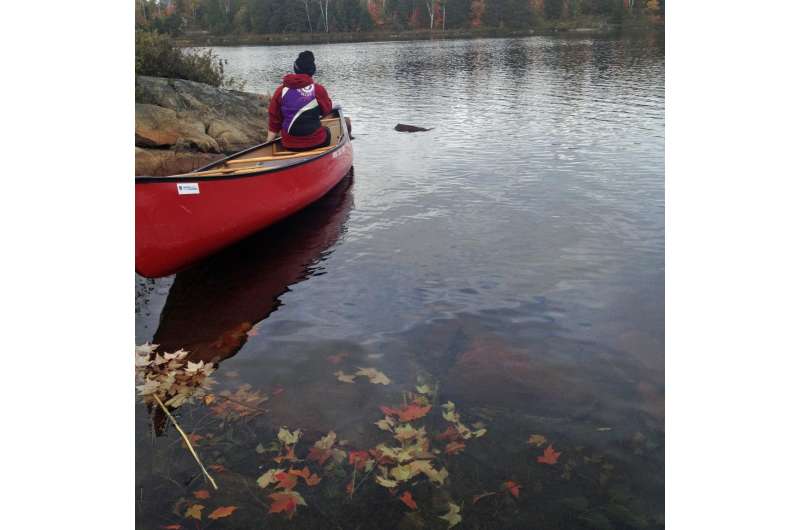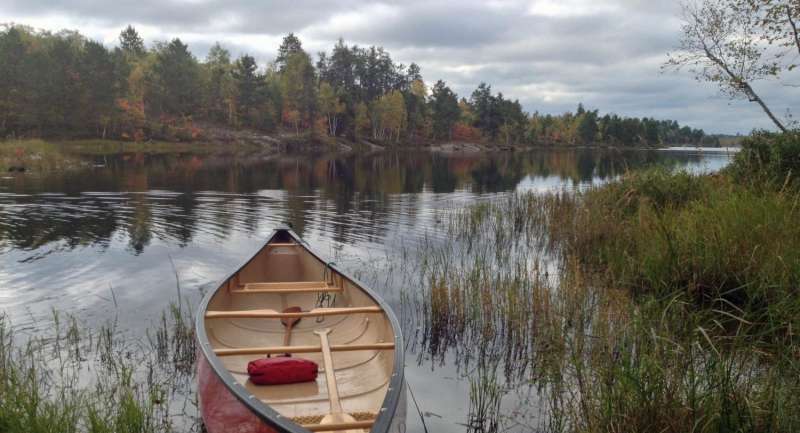It's a fish eat tree world: Study finds widespread support that lakes are fed by their watersheds

Most of the planet's freshwater stores are found in the northern hemisphere, a region that is changing rapidly in response to human activity and shifting climatic trends. An international team of scientists analyzed 147 northern lakes and found that many rely on nutrients from tree leaves, pine needles, and other land-grown plants to feed aquatic life.
The study, published today in Science Advances, offers the most comprehensive analysis to-date on terrestrial subsidies to lake food webs. Findings underscore the interconnectedness of terrestrial and aquatic systems and deliver a key message: to maintain lakes in the northern hemisphere, managers must understand how landscape changes - such as forest clearing or agriculture - impact lake food webs.
Dr. Christopher Solomon, a scientist at the Cary Institute of Ecosystem Studies and a coauthor on the paper, explains, "Because terrestrial support of aquatic food webs differs across lakes, there has been some controversy about its relative importance. We set out to reveal the degree to which freshwater organisms rely on terrestrial nutrients to survive, and the factors that influence variability between lakes in a broad geographic area."
To uncover the link between watersheds and lake food webs, the research team focused their attention on zooplankton. These tiny animals form the base of the aquatic food web and are essential to the survival of fish and other aquatic life.
More than 550 zooplankton samples were taken at lakes across a range of conditions, from boreal to subtropics. Many of these sites are clustered in the Great Lakes region and throughout northern Europe. Stable isotope techniques were used to determine if zooplankton in a given sample were feeding primarily on aquatic plants, or instead focusing on leaves, pine needles, and other organic material that washes into lakes from their watersheds.
Potential nutrient sources - such as leaf litter, soil organic matter, phytoplankton, and algae - contain unique isotopic signatures. Zooplankton carry the isotopic signature of the food source they derive most of their nutrients from. In half of the zooplankton samples, the animals were made up of at least 42% terrestrially derived material. In some instances, terrestrial sources accounted for up to 83% of total zooplankton biomass.

Solomon comments, "If you are what you eat, then many lake-dwelling fish are, in part, made up of plants from their watersheds. Understanding how lakes are tied to the land is vital to effective freshwater management."
To that end, the team also investigated how physical characteristics of the land draining into lakes influence terrestrial subsidies to lake food webs. Differences in tree cover, vegetation density, soil carbon concentrations, lake area, and lake perimeter can impact the amount of terrestrial matter available to aquatic life.
When lakes were nestled into landscapes with abundant trees and vegetation, the team found that zooplankton relied more on land-generated nutrients. Lakes with small surface areas relative to the length of their shorelines were also more reliant on terrestrial inputs. At these sites, changes to shoreline vegetation, such as clearing a tract of forest for a recreational parking lot, could have a significant negative impact on lake life.
But not all lakes are reliant on terrestrial inputs. In lakes with plentiful algae, animals often favor these resources over terrestrial alternatives because they are higher in fatty acids and macronutrients. Land use that increases terrestrial organic matter in these lakes, such as reforesting a cleared site, could create shade that reduces algae growth, forcing organisms to shift their feeding to terrestrial sources.
Lead author Dr. Andrew Tanentzap of the Department of Plant Sciences at the University of Cambridge notes, "Everything is more connected than we think it is. Our goal is to help identify which lakes are reliant on terrestrial subsidies - and which aren't - so that land use planning accounts for impacts to downstream waters."
"Management depends on what you want to achieve. If the system is one in which algal growth is a problem, a good way to combat that is with terrestrial resources that shade algal growth, but at the same time can support zooplankton," Tanentzap explains. Creating riparian buffers could be an effective strategy for managing terrestrial input in freshwater systems.
More information: "Terrestrial support of lake food webs: Synthesis reveals controls over cross-ecosystem resource use," Science Advances, advances.sciencemag.org/content/3/3/e1601765
Journal information: Science Advances
Provided by Cary Institute of Ecosystem Studies



















